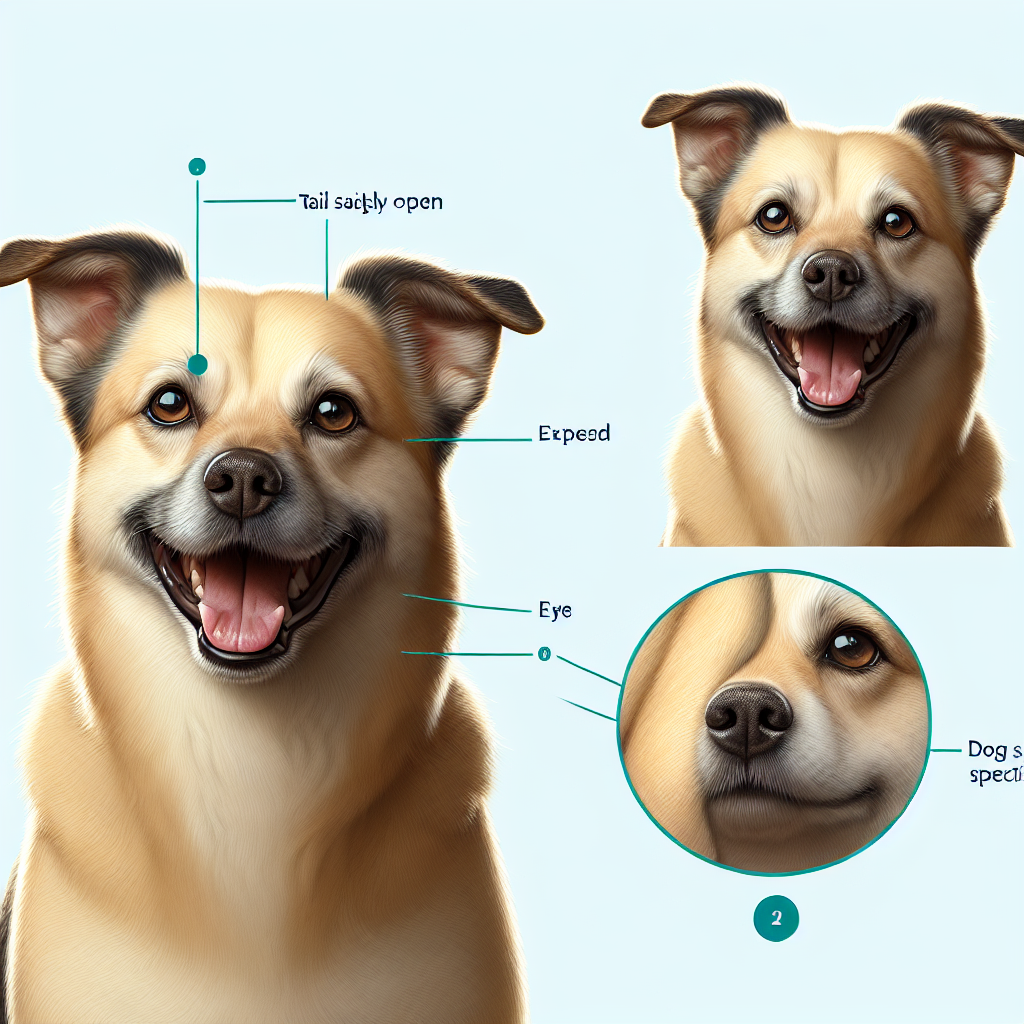Introduction: The Flea Fiasco with Our Feline Friends

Oh, fleas. Those little jumpy critters that turn our sweet, purring bundles of fur into scratching machines. If you’ve ever dealt with a flea infestation on cats, you know it’s a real pain in the neck. Or more like a pain in the fur. We all love our cats, but these tiny invaders make us wonder if there’s anything that can kill fleas on cats instantly. I mean, wouldn’t it be lovely to snap our fingers and—poof—gone? But life’s never that simple, is it?
I remember when my tabby, Max, got fleas for the first time. It was like a horror show. One day he was fine, and the next, he was scratching like he was doing the cha-cha. I was clueless. Google became my best friend. Quick flea solutions for cats? Sign me up. I was ready to try anything—almost. But I learned, the hard way, what not to do and what actually works.
The Flea’s Lifecycle: Why Are They So Tough to Beat?
Fleas are sneaky little buggers. They’ve got this lifecycle that’s more complicated than a soap opera. You see, understanding the flea lifecycle is key to tackling them. There’s the egg, the larva, the pupa, and then, wham!—the adult flea. Each stage has its own quirks and ways to avoid getting squished.
It’s like they’re the ninjas of the insect world. You think you’ve nailed them, and then, bam! There’s another round of them jumping around like they’re at a disco. That’s why it’s so hard to kill fleas on cats just like that. You’ve got to disrupt their little flea party at every stage.
I remember sitting at my kitchen table, reading about this stuff, thinking, “Why aren’t they extinct yet?” But no, they’re survivors. They’ve been around forever—outliving dinosaurs and all that. So, you can’t just wave a magic wand. You’ve got to be the flea terminator.
Common Missteps: What Not to Do When Fighting Fleas
When you’re knee-deep in a flea infestation on cats, desperation can make you do silly things. Trust me, I’ve been there. Like the time I thought vacuuming would solve everything. Ha! If only it were that simple. Sure, vacuuming helps, but it’s just one piece of the puzzle.
And then there’s the DIY potions and lotions. People swear by them, but they can be a mixed bag. I once tried this concoction that made my house smell like a salad bar. Max wasn’t impressed, and neither was I. Plus, some remedies are downright dangerous. You’ve got to be careful with what you slap on your cat’s fur.
I also learned that timing is everything. Flea treatments have a rhythm, a beat you’ve got to catch. Miss it, and you’re back to square one. So, don’t let your guard down. Stay on top of it—like a cat on a sun-drenched window sill.
Dish Soap Magic: A Simple Solution at Home
Now, let’s talk about dish soap. You wouldn’t think something so mundane could be part of our arsenal against fleas, but here we are. In a pinch, dish soap can be your secret weapon. It’s got this thing where it breaks down the flea’s outer shell. I know, sounds like sci-fi, right? But it works, at least for the fleas that are already on your cat.
I remember the first time I tried the dish soap flea treatment. Max was looking at me like I’d lost my marbles. But a little bit of that soap, some warm water, and a gentle rub, and voilà! Dead fleas. Not a permanent solution, but when you’re in the trenches, every little victory counts.
Of course, you can’t just rely on dish soap. It’s like slapping a band-aid on a leaky dam. But as a quick fix, it’s surprisingly satisfying. Just don’t forget—after the dish soap session, dry your cat well. They don’t need any extra drama in their lives.
Exploring Over-the-Counter Options: What Works Fast?
Alright, so you’ve tried the home remedies for cat fleas. Maybe even called in the dish soap cavalry. But if things are still out of control, it might be time to explore over-the-counter flea treatments. These aren’t magic potions—no fairy dust here—but some of them work pretty darn fast.
There are drops, collars, sprays, pills—you name it. Each with its pros and cons. I once had a friend who swore by this flea collar that cost less than a fancy cup of coffee. It worked like a charm for her cat, but mine? Not so much. Every cat’s different, and what works for one might not work for another.
You’ve got to do your homework, read the labels, and maybe even chat with your vet. But once you find the right over-the-counter option, it can feel like you’ve won the lottery. The trick is to find something that works fast, so your cat can go back to being its relaxed, purring self.
So, there you have it. Flea battles aren’t for the faint of heart. But with some know-how and a bit of grit, you can tackle them. Hang in there—your cat’s counting on you. Thanks for sticking it out with me, and good luck out there!
Household Remedies That Zap Fleas
Alright, so you’ve got a flea problem on your hands and you’re not exactly thrilled about it. Who would be? Those little critters love a good cat as much as they love making your life a misery. But fear not, as there are some household remedies that can zap fleas faster than you can say “home remedies for cat fleas”.
First off, let’s talk about the power of vinegar. You might’ve heard your grandma rave about this stuff. Mix equal parts of apple cider vinegar and water in a spray bottle, then give your cat’s coat a light spritz. Fleas hate the smell and taste. Just make sure your feline friend doesn’t mind the smell—cats are picky. And hey, if it doesn’t work instantly, at least your cat will have a shiny coat.
Next up, lemon juice. Yeah, you heard me right. Fleas can’t stand the citric acid. Boil a sliced lemon in water, let it cool, and then dab it on your cat with a cloth. Remember, we’re not trying to make lemonade, just a home remedy for the flea dilemma.
Then there’s the salt and vacuum method. Sprinkle salt on your carpets, leave it overnight, and vacuum it up the next day. Fleas and their eggs are gonna be history. Your cat will thank you for the flea-free living room—or at least stop giving you that side-eye.
The Role of Flea Combs in Instant Relief
If you’ve ever tried to comb a cat, you know it’s not a task for the faint of heart. But when it comes to getting rid of fleas quickly, flea combs for cats are your best friend. These fine-toothed wonders are like magic wands for pet owners.
So, how does it work? Grab your flea comb and a bowl of soapy water. Run the comb through your cat’s fur, starting at the head and working your way down. Each time you catch a flea, dip the comb into the water. The soap traps the fleas, and they’re not coming back. It’s a bit like playing cat and mouse—literally.
It may not be instant like flicking a switch, but it’s pretty darn close. Plus, it’s a bonding moment with your cat or at least a moment where they tolerate you. And isn’t that what it’s all about?
Understanding Flea Traps and Their Effectiveness
Flea traps are like those fly traps you’ve seen, but for fleas. They’re a pretty neat trick if you ask me. Imagine a warm light luring the fleas in, and before they know it, they’re stuck. This is where homemade flea traps come into play.
You can make one yourself—no need to break the bank. Place a shallow dish filled with water and a squirt of dish soap under a nightlight. Fleas jump toward the light, fall into the water, and that’s the end of their journey.
Now, let’s get real. This isn’t gonna eliminate an infestation overnight. Flea traps are more of a supporting act than the headliner. But hey, every little bit helps, and it’s always satisfying to see those pesky fleas meeting their doom.
The Magic of Flea Shampoos: Are They Quick Enough?
Flea shampoos—now there’s a topic that gets pet owners talking. The best flea shampoo for cats isn’t just about washing your pet. It’s about giving those fleas a one-way ticket out of town. But are they quick enough to kill fleas instantly?
Most shampoos promise instant results. You lather up your cat, and fleas start dropping like flies. Sounds good, right? But remember, it’s a process. The shampoo kills the fleas on your cat, but not the eggs lying around your house.
It’s like cleaning up after a wild party. You get the immediate mess sorted, but there’s always more to do. Still, nothing beats the satisfaction of seeing those pests go down the drain. Just remember to use a shampoo that’s safe for your furry friend—cats have a thing about that.
When to Call In the Vet for Flea Control
Sometimes, despite your best efforts, the fleas just don’t quit. That’s when you know it’s time for the big guns. An emergency flea treatment for cats is calling in the vet. They’ve got access to treatments that are stronger and faster than anything you can get over the counter.
If your cat is scratching more than a DJ at a club, and nothing seems to work, it might be time to see a vet for cat fleas. The vet can provide flea control tips for pet owners like you and figure out if there’s something else going on.
And don’t worry, there’s no shame in asking for help. Fleas are relentless, and sometimes, you need a pro to step in. Plus, your cat will appreciate not having to deal with the itchiness any longer.
So, there you have it. Fleas may be small, but they don’t stand a chance against a determined pet owner. Whether it’s homemade remedies or a trip to the vet, you’ve got this. Thanks for sticking around and good luck in your fight against those pesky fleas!
The Home Remedy Conundrum: What Actually Works?
Alright, folks. Gather ’round. We all have that one friend—a home remedy enthusiast who swears by vinegar and lemon juice for almost everything. But let’s get real. Do home remedies for fleas on cats really work or are we just fooling ourselves? You might have heard about using dish soap or even baking soda as non-toxic flea treatments for cats. Sounds simple, right? But there’s no magic potion hiding in your pantry that kills fleas on cats instantly. Instead, it’s more like a slow dance to reduce their numbers. Some folks have had luck with these methods, but others, not so much.
Here’s the kicker: while natural concoctions can help, they often lack the punch needed to tackle a full-blown flea invasion. Fleas are tough little critters, and sometimes, a mixture of vinegar and water just won’t cut it. But, hey, if you’ve got time on your hands and a cat that’s willing to tolerate a vinegar bath or two, give it a whirl. Just don’t bet the farm on it.
Flea Collars: Do They Really Pack a Punch?
Flea collars—those little rings of promise. You slap one on your feline and expect a miracle. But do they live up to the hype? The effectiveness of flea collars for cats can be a mixed bag. Some are great, others—well, they’re about as useful as a chocolate teapot.
In my years of dealing with cats, I’ve seen collars that work wonders. They seem to repel fleas like a charm, and you start thinking, “Why didn’t I try this sooner?” But then, there are collars that are all bark and no bite. So, how do you know which is which? You gotta look for collars that release active ingredients over time. They’re the ones that might actually give those fleas a run for their money.
But, fair warning—don’t expect them to be a standalone solution. Flea collars can be part of the arsenal, but not the whole shebang. They won’t kill fleas on cats instantly, but they can help curb the problem.
The Vet Visit: When to Throw in the Towel
Sometimes, you just gotta know when to throw in the towel and call in the cavalry. If your cat is scratching more than a DJ at a nightclub, it might be time to see a vet. But when exactly do you reach that point?
Well, if you’ve tried the home remedies and the flea collars, and your cat is still acting like it’s auditioning for the role of a flea-ridden extra in a horror movie, it’s probably time. Vets have access to treatments that you won’t find at your local store. They can prescribe spot-on treatments or even oral medications that pack a wallop.
And let’s not forget—seeing a vet can offer peace of mind. You’re not just guessing anymore. You’re getting a professional to weigh in, which can be a game changer. So, don’t wait until your cat is losing fur faster than a Christmas tree loses needles in January. Make that appointment when things start to go south.
Natural Options: A Dive into Essential Oils
Essential oils—people love them or hate them. Can they really help with fleas? Well, the jury’s still out on that one. Essential oils for fleas on cats can be a bit of a gamble. Some oils, like cedarwood or lavender, are touted for their flea-repelling properties. But, word to the wise—cats are super sensitive to oils. You have to be careful.
If you’re going down this path, make sure to dilute the oils properly. A few drops in a spray bottle with water might do the trick. But don’t overdo it. You don’t want your cat smelling like a walking potpourri sachet.
The thing is, while essential oils can add to your natural flea-fighting arsenal, they aren’t a surefire way to kill fleas on cats instantly. They can help keep fleas at bay, but you might still need to combine them with other treatments for the best results.
Wrapping It Up: Keeping Fleas Out for Good
So, you’ve tackled the flea problem. Congrats! But now comes the tricky part—keeping those pesky critters out for good. Long-term flea prevention for cats is the name of the game. You don’t want to go through the ordeal again, trust me.
Start by keeping your home clean. Vacuum regularly and wash your cat’s bedding often. Fleas love to make a home in carpets and fabric. Also, consider using flea prevention treatments regularly. It might be a topical solution or a monthly pill—find what works for you and stick to it.
Preventing fleas on cats naturally involves keeping them indoors more often and grooming them regularly. A flea comb can be your best friend. It helps to catch any stray fleas before they become a problem.
At the end of the day, there’s no one-size-fits-all solution. It’s about finding what works for your furry friend and sticking to it. Keep experimenting, stay patient, and don’t lose hope. You’ve got this. Thanks for hanging in there. Here’s to itch-free days and nights ahead!
Quick Takeaways:
Alright folks, let’s cut right to the chase. If you’ve ever dealt with a flea infestation on cats, you know it’s a battle you wouldn’t wish on your worst enemy. So, what kills fleas on cats instantly? Let’s be real—there’s no magic wand here. But, hey, there are some quick flea solutions for cats that can give you a fighting chance. First off, dish soap can be your new best friend. A bath with dish soap can kill fleas on contact. Just remember, cats aren’t the biggest fans of water, so arm yourself with patience (and maybe some treats).
Home remedies for cat fleas can be a mixed bag. Some folks swear by vinegar solutions, while others say essential oils like lavender and cedarwood do the trick. But remember, not all oils are safe for your kitty. Flea combs for cats? Definitely worth a shot. They can help you catch those little buggers red-handed.
Over-the-counter flea treatments are also in play, but make sure you’re reading labels like a hawk. And if you’re feeling crafty, homemade flea traps can help monitor the situation. It ain’t rocket science—just some soapy water and a light source to lure ’em in.
And hey, if the fleas are still hanging around despite your best efforts, it might be time to see a vet. They’re the real MVPs when it comes to emergency flea treatment for cats. So, there you have it—some quick takeaways to help you tackle those pesky fleas head-on.
FAQs:
1.
What kills fleas on cats instantly?
Well, if you’re looking for the holy grail, dish soap is your go-to. A good bath with this kitchen staple can kill fleas in a snap. But a word of caution—cats and baths aren’t exactly a match made in heaven. So, proceed with care and possibly some band-aids for yourself.
2.
Are flea collars effective for stopping flea infestation on cats?
Oh, the flea collar conundrum. They can be hit or miss. Some folks say they’re lifesavers, while others think they’re just fancy neck accessories. They release chemicals that repel fleas, but if you’re dealing with a full-blown flea infestation, you might need something more heavy-duty.
3.
When should I see a vet for fleas on my cat?
If your home remedies and quick flea solutions for cats aren’t cutting it, it might be time to wave the white flag. If your cat is scratching like there’s no tomorrow or losing fur, a vet visit is in order. They can offer treatments that work when you’ve tried everything else.
4.
Can essential oils help kill fleas on cats?
Essential oils sound like a natural dream, right? But not so fast. While some oils, like cedarwood, might help, others can be toxic. Always do your homework and maybe consult your vet before going down the essential oil route. Safety first, folks.
5.
How can I prevent fleas on cats naturally?
Prevention is better than cure, as they say. Regularly vacuuming your home and washing your cat’s bedding can keep those pesky fleas at bay. A flea comb can also be a handy tool in your arsenal. And don’t forget—keeping your yard tidy can stop fleas from waltzing into your home uninvited.
Conclusion:
So, there you have it. Fleas are the gatecrashers no one invited, but knowing what kills fleas on cats instantly can give you the upper hand. Whether it’s dunking your feline friend in a dish soap bath or trying out home remedies, there’s no one-size-fits-all solution. Flea collars and essential oils might work for some, but not for others. And when all else fails, the vet’s your best bet.
Remember, though, it’s not just about killing fleas but understanding the flea lifecycle too. Those little critters are sneaky, and if you miss a step, they’ll be back before you know it. So, keep your home clean, your cat groomed, and your eyes peeled.
Thanks for sticking it out with us through this flea-ridden journey. It’s not a glamorous topic, but hey, someone’s gotta talk about it, right? Here’s wishing you and your feline friend a flea-free future. Keep your chin up, and remember—you’ve got the tools and the know-how to tackle this head-on. Good luck!
References:
1. [Protect My Pet Blog – How to Get Rid of Fleas on Cats Fast](https://www.protect-mypet.com/blog/how-to-get-rid-of-fleas-on-cats-fast/)
2. [WebMD – Remove Fleas from Pet](https://www.webmd.com/pets/remove-fleas-from-pet)
3. [Amazon – CAPSTAR (nitenpyram) Treatment Tablets](https://www.amazon.com/CAPSTAR-nitenpyram-Treatment-Tablets-Killing/dp/B07Q1TKTP9)
4. [PetMD – How to Get Rid of Cat Fleas Naturally](https://www.petmd.com/cat/how-get-rid-cat-fleas-naturally)
5. [The Spruce Pets – Home Remedies for Fleas on Cats](https://www.thesprucepets.com/home-remedies-for-fleas-on-cats-4580388)
Our solution eradicates fleas on contact without harmful chemicals, ensuring a safe environment for your pets and family. Easy to use and highly effective, SayByeBugs helps you maintain a flea-free home. Learn more and order today at SayByeBugs.com
Our solution eradicates fleas on contact without harmful chemicals, ensuring a safe environment for your pets and family. Easy to use and highly effective, SayByeBugs helps you maintain a flea-free home. Learn more and order today at SayByeBugs.com








